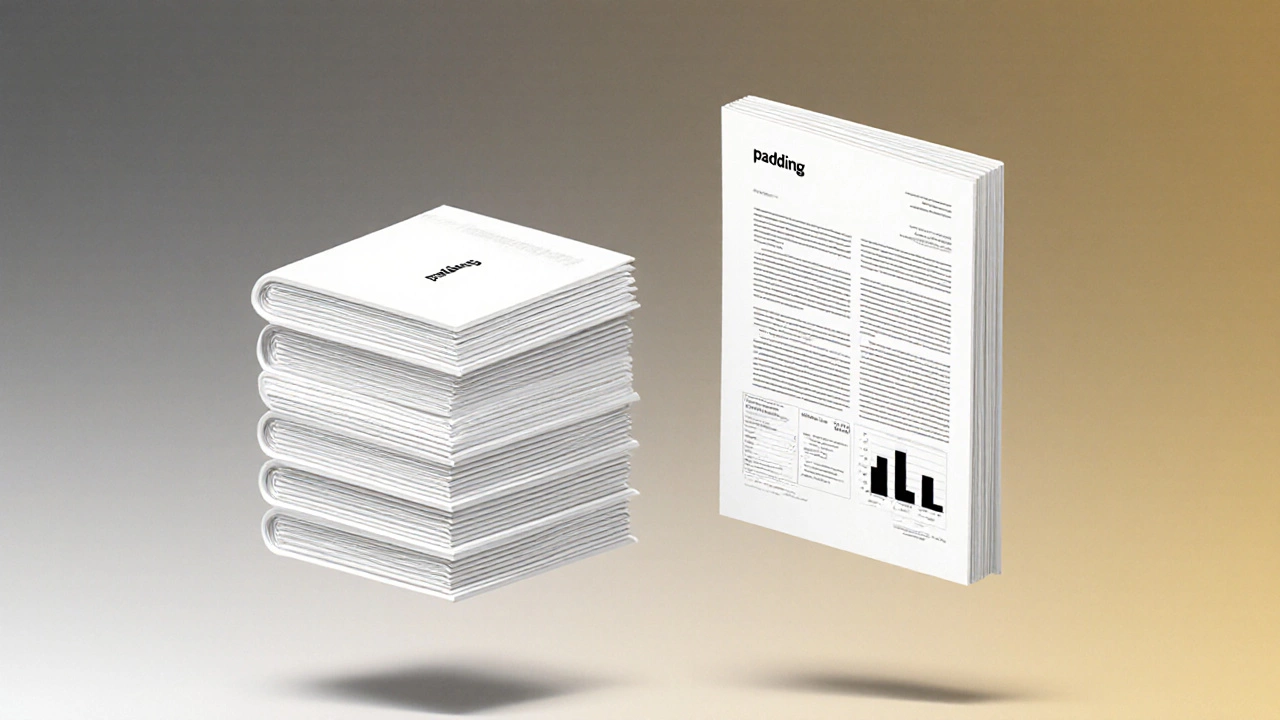Business Book Word Count Converter
Convert Word Count to Page Estimate
Enter the word count for your business document and get an estimated page count based on industry standards.
Ever stared at a 200-page business book and wondered how much actual content it holds? You’re not alone. Many entrepreneurs, students, and startup founders assume a thick book means deep insight - but page count doesn’t equal value. The real question isn’t how many pages - it’s how many words are inside.
What’s the real word count for a 200-page business book?
A standard 200-page business book contains between 50,000 and 60,000 words. That’s not a guess - it’s based on industry standards used by publishers like Harvard Business Press, Wiley, and Penguin Random House. These publishers design their business titles to fit a consistent format: 250 to 300 words per page, double-spaced, with standard margins and 11- or 12-point font.
Why does this matter? Because word count affects how much you can pack into your own business plan, proposal, or manuscript. If you’re writing a book or a detailed business plan, knowing this range helps you set realistic goals. A 50,000-word book isn’t just long - it’s the minimum threshold for serious publishing. Anything under 45,000 words is usually classified as a long-form report or white paper, not a full book.
Why page count is misleading
Not all pages are created equal. A 200-page book might include:
- Front matter: title page, copyright, dedication, table of contents (10-15 pages)
- Back matter: index, references, appendix (5-15 pages)
- Images, charts, and white space (10-30 pages)
- Chapter openings with pull quotes or large headings (5-10 pages)
That means only about 150-170 pages are filled with actual text. Multiply that by 275 words per page, and you’re looking at roughly 45,000 to 50,000 words of core content. The rest? Visual breaks, formatting, and publisher padding.
Compare that to a 200-page novel - it might hit 70,000 words because novels use tighter spacing, no sidebars, and fewer images. Business books are designed for skimming, not reading cover to cover. That’s why they leave more breathing room.
How this applies to your business plan
If you’re writing a business plan, you don’t need a 200-page book. Investors don’t want one. The average pitch deck is 10-15 slides. The average investor-approved business plan is 15-30 pages - about 5,000 to 10,000 words.
Here’s what actually gets read:
- Executive summary (500-800 words)
- Market analysis (1,500-2,500 words)
- Financial projections (1,000-2,000 words)
- Team and operations (1,000-1,500 words)
That’s 4,000 to 7,000 words total. A 200-page business book has seven to twelve times more content than what most startups need to raise capital or secure a loan.
Why do so many people write 100+ page business plans? Because they think more = better. It’s not. Investors skip long documents. They look for clarity, data, and traction. A 30-page plan with real numbers beats a 200-page one filled with fluff every time.

What’s inside a 50,000-word business book?
If you’re reading a 200-page business book, here’s what you’re likely getting:
- Case studies: 3-5 deep dives, each 2,000-4,000 words
- Framework explanations: 5-8 models (SWOT, Porter’s Five Forces, Lean Canvas) with 1,500-3,000 words each
- Author’s personal experience: 8,000-12,000 words of narrative
- Step-by-step guides: 10,000-15,000 words of actionable advice
- Research citations and data: 5,000-8,000 words
That’s the real value - not the page count. A book like Lean Startup by Eric Ries is 240 pages and 62,000 words. It works because every word serves a purpose. It doesn’t waste space.
Compare that to self-published business books on Amazon that are 200 pages but only 30,000 words. They’re thin. Often padded with large fonts, wide margins, and repetitive points. You’re paying for paper, not insight.
How to estimate word count in your own document
Want to know how your draft stacks up? Here’s how to measure it without guessing:
- Open your document in Word or Google Docs
- Go to Tools → Word Count (or press Ctrl+Shift+C)
- Look at the total word count
- Divide that number by 275
- That’s your estimated page count
Example: Your business plan has 55,000 words. 55,000 ÷ 275 = 200 pages. Perfect. If you have 30,000 words, you’re at 110 pages - too short for a published book, but ideal for an investor-ready plan.
Pro tip: If your document is under 40,000 words and you’re trying to publish it as a book, you’ll need to add case studies, exercises, or appendices to reach industry standards.

What publishers expect
Traditional publishers don’t accept manuscripts based on page count. They care about word count. Here’s what they look for:
- Minimum: 45,000 words for a business book
- Optimal: 50,000-70,000 words
- Maximum: 80,000 words (beyond this, printing costs rise and reader fatigue sets in)
Self-publishers often ignore this. They think 150 pages is enough. But if your book doesn’t hit 45,000 words, it won’t be taken seriously by bookstores, libraries, or serious readers. It’ll be labeled a pamphlet.
Amazon’s Kindle Direct Publishing (KDP) allows anything, but the top-selling business books on Amazon all fall between 50,000 and 65,000 words. That’s not coincidence. Readers expect depth.
What you should do with this info
Here’s how to use this knowledge:
- If you’re writing a business plan - aim for 5,000-10,000 words. Anything longer is overkill.
- If you’re writing a book - aim for 50,000-60,000 words. Cut fluff. Add real examples.
- If you’re reviewing a business plan - skip the 50-page PDF. Look for the 5-page summary first.
- If you’re buying a business book - check the word count in the product details. If it’s under 45,000, you’re getting a light read.
Don’t confuse length with authority. A 10,000-word business plan from a founder who’s tested their idea with 50 customers is worth more than a 60,000-word book full of theory.
Final thought: It’s not about pages - it’s about impact
A 200-page business book isn’t impressive because it’s thick. It’s impressive because it gives you tools you can use - not just ideas you can skim. The best business books don’t fill pages. They change how you think.
Whether you’re writing one or reading one - focus on clarity, evidence, and action. Not page count.
How many words are in a 200-page business book?
A 200-page business book typically contains between 50,000 and 60,000 words. This assumes standard publishing formatting: 250-300 words per page, double-spaced, with standard margins and font size. Pages with images, tables, or chapter openings reduce the total word count slightly, so the actual text may be closer to 45,000-50,000 words.
Is a 200-page business plan too long?
Yes, a 200-page business plan is far too long. Investors and lenders expect concise plans - usually 15 to 30 pages (5,000 to 10,000 words). A 200-page document is overwhelming and unlikely to be read fully. Focus on clarity, data, and key metrics instead of volume.
How do I convert word count to pages?
Use 275 words per page as a standard for business documents. Divide your total word count by 275 to estimate pages. For example, 55,000 words ÷ 275 = 200 pages. For tighter formatting (like a pitch deck), use 350 words per page. Always check your software’s word count tool for accuracy.
Why do some business books feel shorter than others?
Some books use larger fonts, wider margins, more images, or chapter breaks to make the content feel substantial. A 200-page book with 30,000 words is padded - it’s not dense with information. High-quality business books pack more words into fewer pages. Look at the word count, not the page count.
Can I write a successful business book under 45,000 words?
Technically yes, but it’s harder to get published or taken seriously. Traditional publishers prefer 45,000+ words. Self-published books under 45,000 words often get labeled as "e-books" or "guides," not full books. If you’re under this threshold, add case studies, exercises, or appendices to increase depth.
What’s the average word count for a startup pitch deck?
A startup pitch deck usually has 10-15 slides with 100-300 words per slide. That’s about 1,500 to 4,500 words total. The goal is to spark interest, not explain everything. The full business plan - if requested - should be 5,000-10,000 words.

